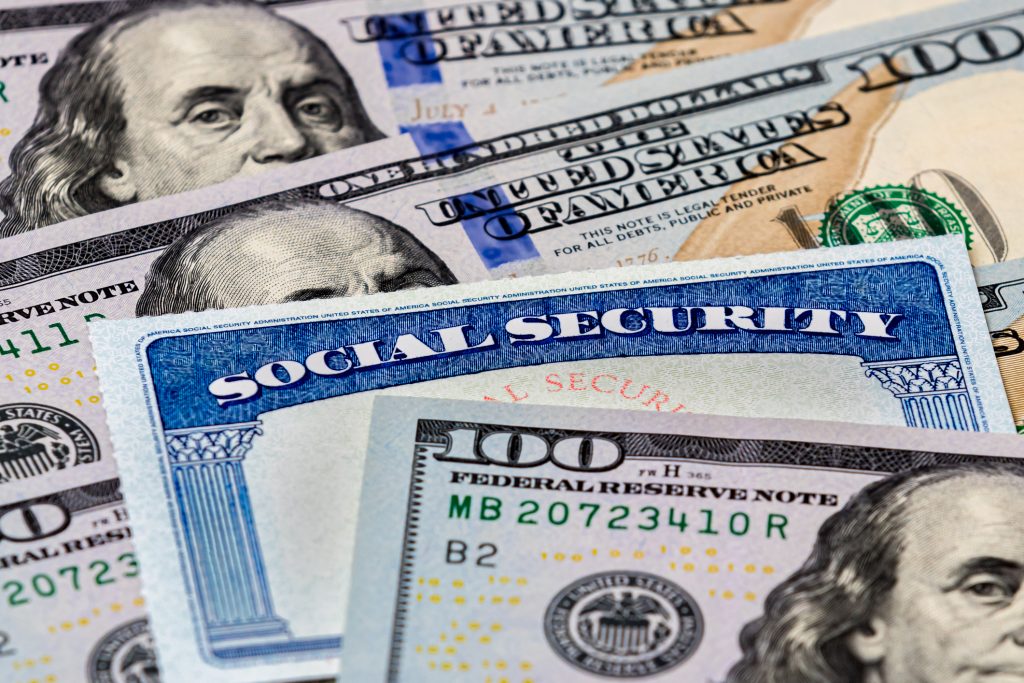
Image source: Getty Images
For years, earning $100,000 per year was seen as the key to getting out of the grind of living paycheck to paycheck. With that kind of income, most of us thought we’d be able to add to our savings accounts and stop worrying about every item we put in our basket at the grocery store.
However, a survey by PYMNTS revealed that 62% of Americans currently live paycheck to paycheck — and nearly half of those earning more than $100,000 per year still say they live paycheck to paycheck. What is keeping so many people stuck in a financial rut and worried about every dollar in their checking account?
Based on the PYMNTS survey, here’s why so many people are still living paycheck to paycheck.
1. Not earning enough
According to PYMNTS Intelligence data, the No. 1 reason people live paycheck to paycheck is they simply don’t earn enough. And it’s not just lower-income earners who feel that way. While 40% of those earning less than $50,000 per year say they don’t earn enough, 21.4% of people earning more than $200,000 per year also say their earnings aren’t high enough.
If you’re earning under $100,000, it might be hard to fathom how someone earning that much can still live paycheck to paycheck. But, living expenses can add up quickly, especially in bigger cities, like San Francisco, where the median home price is $1.4 million and the median rent is $4,271. Add in costs like daycare, which average $29,508 per year, and that $200,000 goes quickly.
The data shows that living paycheck to paycheck isn’t just a result of low wages; it’s also a symptom of rising living costs that affect people across income brackets.
2. Growing debt
Another cause of living paycheck to paycheck is the rise of consumer debt. According to Experian, the total U.S. consumer debt balance increased to $17.1 trillion in 2023, up 4.4% from 2022. As a collective, U.S. consumers owe another $1.5 trillion on vehicle loans, which are backed by assets that lose value over time, creating a double financial hit for consumers.
Credit card interest rates are another heavy burden, reaching 24% or even higher for some cards, depending on your credit score. Even a seemingly manageable balance of $1,000 can spiral into overwhelming debt, as high interest quickly adds up if consumers can only make minimum payments or struggle to pay off the balance each month.
The relentless accumulation of interest not only limits monthly spending power; it can also trap consumers in a cycle of debt, making it difficult to break free from living paycheck to paycheck.
Want to lower your monthly vehicle-related costs? Check out our list of the most affordable car insurance companies.
3. Paying for family members
The third most common reason people reported living paycheck to paycheck is due to paying for family members. While the study doesn’t clarify if this means parents paying for their minor children, adult children supporting aging parents, or families simply covering costs for an unemployed member, it shows just how interconnected financial stability is within families.
When one family member faces financial hardship, others often step in, which can strain even the most carefully managed budgets. This shared responsibility can make it difficult for individuals to save, build emergency funds, or plan for retirement, perpetuating the cycle of living paycheck to paycheck.
4. Burned through savings
The fourth most common cause of living paycheck to paycheck is recently using a significant portion of their savings. This indicates that living paycheck to paycheck is a temporary issue that will subside when savings are replenished. However, relying on savings to cover expenses can be risky, especially if it becomes a recurring habit.
Without enough financial cushion, even temporary financial setbacks — like a medical emergency, car repair, or job loss — can throw a household into financial distress. Rebuilding savings takes time and discipline, and for many, it’s difficult to replenish savings when they’re already stretched thin each month.
While most people know the importance of having an emergency fund, creating sinking funds for specific expenses, like car repairs or holiday spending, can make budgeting easier and reduce financial strain.
Small, consistent steps can help you break free
To break out of the paycheck-to-paycheck cycle, consider using a budgeting app to track spending. Limit unnecessary spending if possible, but just seeing where your money is going can make it easier to manage your finances.
Try to automate savings by redirecting a portion of your paycheck to a high-yield savings account before you even see it. Click here for our picks for the best high-yield savings accounts.
These accounts typically earn a higher interest rate than traditional savings accounts. If possible, create buckets in your savings account for expected expenses, like car repair or health insurance premiums, so those expenses are budgeted for before they happen.
Taking small, consistent steps — like setting up sinking funds or reviewing monthly expenses — can help you regain control over your finances.
Alert: highest cash back card we’ve seen now has 0% intro APR into 2026
This credit card is not just good – it’s so exceptional that our experts use it personally. It features a 0% intro APR for 15 months, a cash back rate of up to 5%, and all somehow for no annual fee!
Click here to read our full review for free and apply in just 2 minutes.
We’re firm believers in the Golden Rule, which is why editorial opinions are ours alone and have not been previously reviewed, approved, or endorsed by included advertisers.
Motley Fool Money does not cover all offers on the market. Editorial content from Motley Fool Money is separate from The Motley Fool editorial content and is created by a different analyst team.The Motley Fool has a disclosure policy.
 benzinga.com
benzinga.com fool.com
fool.com



